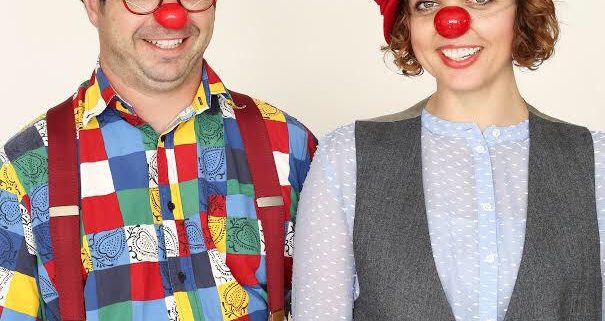Medical clowning courses help students, patients

One can often find professor Caitlyn Conlin working in a hospital -— but not in a traditional medical profession. Conlin, sporting a red nose, interacts with young hospitalized patients through the art of medical clowning, which is targeted at transforming the experience of hospitalization for patients.
Conlin and professor Zachary Steel from the School of Dramatic Arts teach the medical clowning courses. Along with their instructors, students are able to go to hospitals to apply what they have learned in class and build long-term bonds with patients.
The course explores the philosophies of medical clowning and offers students opportunities to perform in hospitals. Steel said that in the class, students learn the principles of theatrical clowning to reveal the “most innocent and pure” parts of themselves to pursue joy and take this newly discovered joy to hospitals.
“The philosophy of clowning … when you participate in a medical clowning class, you do exercises that allow you to tap into a certain state of being that is completely free and has unlimited imagination,” Conlin said.
Conlin also said medical clowning is all about improvisation and intimate interaction with patients and the environment.
“When I go into the hospital, I have nothing planned,” she said. “I mean, I do have songs that I know that I’ll sing sometime when singing comes up, but I don’t plan what I’m going to sing. A lot of times I don’t plan what song I’m going to sing and a lot of times I make up songs … You are pushing yourself into unknown places and a sort of magic starts to happen in the moment. ”
Conlin said the magic of medical clowning lies not only in healing patients but also in giving hope to patients’ families. When Conlin and Steel met with an unconscious patient, the nurse said there was not much the medical clowns could do. However, the patient’s mother called them in, and they said they were able to successfully implore the mother’s experience in the hospital.
According to Conlin, by interacting with the patients actively, the medical clowns are able to gain trust from patients and create beautiful memories with them. She improvised a performance to engage with a shy boy.
“I started interacting with different objects in the hallway around the room and pretending that they were alive,” Conlin said. “Doctors and nurses were passing through the hallway, and I turned it into a parade … a beautiful, amazing parade.”
Conlin said she accompanied the boy on his way to the operation room and made him feel comfortable.
Steel said that medical clowning may also give hope to patients’ families. On one visit with unconscious patient, Conlin and Steel said they were able to change the mother’s experience at the hospital.
“It’s very meaningful to the mother to have someone treating her daughter with the same feeling of aliveness… That was really important for the mother to keep the hope going,” Conlin said.
Conlin said that children and adult patients have different responses to medical clowns. She said adults are at first more hesitant to open themselves to more creative outlets.
But once patients have experienced medical clowning, Conlin said they realize the clowns can tailor the experience to their age and topics they want to discuss.
“If someone wants to talk about their trip to Alaska, the clown will play with that,” Conlin said. “If someone wants to talk about monsters and zombies, then the clown will do that. So the content is different, but the play is still the same.”
There are rules to medical clowning because of the environment that the hospitals provide. Steel said a medical clown should avoid speaking loudly and remember to be respectful to their surroundings.
“You are only doing what you are given the permission to do by the patients,” Steel said.
However, Steel said that surprises are needed sometimes because they want to promote optimism in hospital environments. They want patients to feel comfortable with their surroundings.
As opposed to other types of clowning, medical clowning aims to build one-to-one immersive interactions with patients, rather than facing a large audience. Christina Chow, a senior majoring in biological sciences who is currently taking Steel and Conlin’s class.
“It’s really not about ‘Oh, look at me, I’m a clown on stage,’” Chow said. “It’s like, ‘OK, I’m here for you.’”
This story has been updated for clarity.

